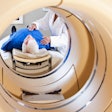Dear AuntMinnie Member,
Do terminally ill cancer patients really need repeat medical imaging studies? That's the question asked by a new study in the Journal of the National Cancer Institute that tracked the use of imaging in patients with stage IV cancer.
U.S. researchers followed two groups of cancer patients, one group with stage IV cancer and the other with stage I and II disease, for more than 10 years. They found that the proportion of imaging rose among the sicker group while it declined in those with earlier-stage disease.
The authors interpreted the results to mean that many terminally ill patients were receiving unnecessary imaging, when caregivers should instead be focusing on palliative care. Further, they believe national guidelines covering imaging use in stage IV patients are needed. Learn more by clicking here.
PEM for arthritis
In other news, positron emission mammography (PEM) might need a new acronym soon. The modality is carving out a role in breast imaging, but researchers from Johns Hopkins University have found that it could also be useful for arthritis imaging.
They tested a commercially available PEM scanner in a small group of patients with osteoarthritis, comparing the system's functional information with the anatomical details available with radiography, as well as a whole-body PET/CT scanner.
Their conclusion? The PEM studies detected the signs of inflammation that are hallmarks of arthritis, and the system performed at least as well as PET/CT. The researchers recommended further study, according to an article you can read by clicking here.
Also, read about a new study that compares PET/MRI to PET/CT for imaging patients with lung cancer. The researchers found that PET/MRI was comparable to the more established technique, with far less radiation dose. That story is available by clicking here, or by visiting our Molecular Imaging Digital Community at molecular.auntminnie.com.
History of radiation oncology
Finally, our Moments in Radiology History series has been a big hit since we launched it several months ago. Readers have enjoyed hearing radiology historian Otha Linton's perspective on the landmark moments that have contributed to the growth and development of the specialty.
Mr. Linton now turns his attention to radiology's sister specialty, radiation oncology. While in the early years the two disciplines shared much, from the same technology to the same pioneers, since then they have diverged significantly.
Learn about those early days in this week's column, which tracks major milestones such as the discovery of radium and the development of the Coolidge x-ray tube. You'll find it by clicking here, or visit our Radiation Oncology Digital Community at radiation.auntminnie.com.




















